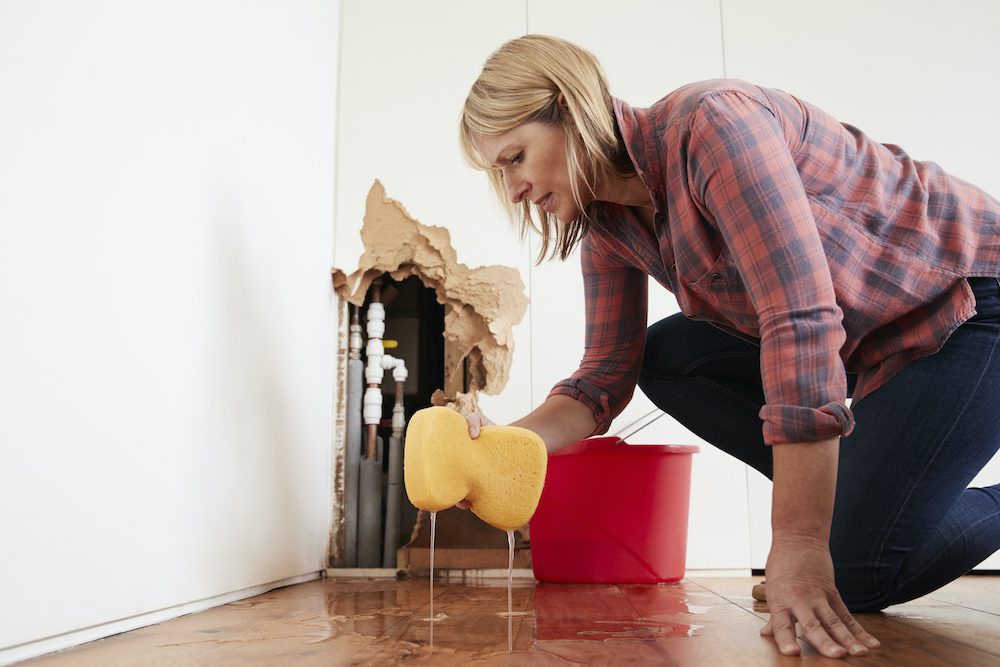How to Find and Repair Water Leaks-- A Comprehensive Overview
Further DetailsWe have discovered this post involving Top leak detection hacks listed below on the net and accepted it made sense to talk about it with you in this article.

Early discovery of dripping water lines can minimize a prospective calamity. In addition to conserving you cash, it will certainly decrease the stress as well as irritation. The moment you discover a leakage, calling your plumber for repair work is the very best service. Some tiny water leakages might not be noticeable. If you can not detect it with your nude eyes, right here are some hacks that assist.
1. Examine the Water Meter
Every house has a water meter. Checking it is a surefire manner in which aids you find leaks. For starters, switch off all the water resources. Ensure no one will purge, make use of the tap, shower, run the washing maker or dish washer. From there, go to the meter and watch if it will transform. Since no one is using it, there need to be no motions. If it relocates, that suggests a fast-moving leakage. If you discover no modifications, wait an hour or 2 as well as check back again. This means you may have a slow-moving leak that can also be underground.
2. Inspect Water Consumption
If you detect abrupt changes, in spite of your usage being the same, it means that you have leakages in your plumbing system. An unexpected spike in your expense indicates a fast-moving leak.
At the same time, a consistent boost on a monthly basis, despite the very same practices, shows you have a slow-moving leakage that's likewise slowly rising. Call a plumber to extensively check your residential or commercial property, particularly if you feel a cozy location on your floor with piping underneath.
3. Do a Food Coloring Examination
30% comes from toilets when it comes to water usage. Examination to see if they are running properly. Decrease flecks of food shade in the tank and wait 10 mins. If the shade somehow infiltrates your dish throughout that time without flushing, there's a leakage between the container and also dish.
4. Asses Outside Lines
Don't forget to inspect your outside water lines too. Needs to water permeate out of the connection, you have a loose rubber gasket. One little leak can lose tons of water and increase your water expense.
5. Examine as well as Assess the Scenario
Home owners must make it a practice to check under the sink counters as well as also inside cabinets for any type of bad odor or mold and mildew development. These two warnings indicate a leakage so prompt interest is called for. Doing regular inspections, even bi-annually, can save you from a major issue.
Check for discolorations and weakening as the majority of pipes as well as home appliances have a life expectancy. If you think dripping water lines in your plumbing system, do not wait for it to rise.
Early detection of dripping water lines can alleviate a possible catastrophe. Some little water leakages may not be noticeable. Inspecting it is a surefire method that aids you find leaks. One small leak can throw away loads of water and increase your water bill.
If you suspect leaking water lines in your plumbing system, don't wait for it to intensify.
How to Know If Your Home Has a Hidden Leak
Water Meter Reveals Inexplicable Water Usage
If you’d like to test whether or not there’s a leak somewhere in your home, you can do this using your water meter. Here is how to conduct the test:
Don’t use any water in your home for at least 30 minutes; this also means not turning on faucets or water-using appliances.
Go outside, and check your water meter for activity.
If your water meter shows that there was activity, even though no one was using any water, this proves that there is a leak in your home.Visible Mold or Mildew Growth
Leaks behind walls create moist, dark environments that allow mold and mildew to grow and thrive. Eventually, you might see mold growth forming on the wall closest to a hidden leak.
If mold is growing in an area that receives a high amount of moisture, such as a bathroom, it may simply be an indication that better ventilation is needed. However, if you see mold growth on a wall or the ceiling in an area where you would not expect, you probably have a hidden leak.
Musty, Mildew Odor
Sometimes you might not be able to see the mold or mildew that is growing as a result of a leak. However, the smell can give the problem away just as easily. If you catch a whiff of something musty, there’s a good chance that old water is collecting somewhere in your home that you can’t see.
Stained/Warped Walls, Ceilings, or Floors
When your home soaks up water, a variety of red flags can become visible, including ceiling stains, bubbling drywall, warped walls, and sagging floors. While these issues can be caused by excess humidity, they can also be signs that a pipe or plumbing connection has started leaking behind your walls.
Inexplicably High Water Bill
After a while, you get a general sense for what your water bill should be. If you own a pool or sprinkler system, your bill will tend to be higher during summer. However, if you receive a water bill that seems especially high, and you can’t figure out what caused it, then you may have a hidden leak somewhere that’s increasing your bill.
https://www.plumbingjoint.com/blog/2019/july/how-to-know-if-your-home-has-a-hidden-leak/

As a passionate reader about Top leak detection hacks, I imagined sharing that information was really useful. Enjoyed reading our piece? Please share it. Let another person locate it. I cherish reading our article about Locating water leaks.